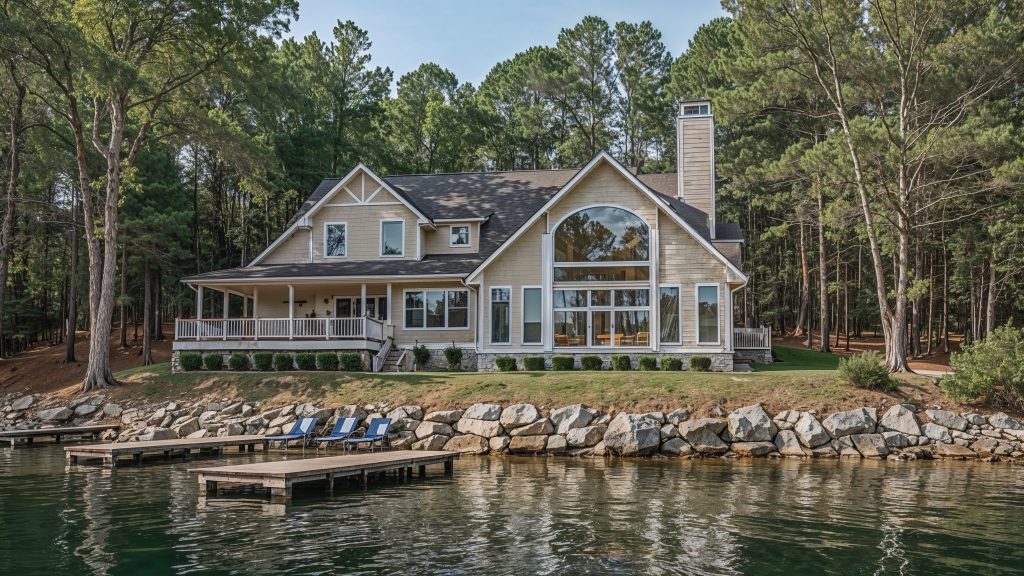Vacation Home Financing Strategies: From Beginner to Pro in 2025

Unlocking the Secrets of Vacation Home Financing in 2025
The dream of owning a vacation home is more attainable than ever, thanks to a dynamic range of vacation home financing strategies available in 2025. Whether you’re a first-time buyer or a seasoned investor expanding your portfolio, understanding the right approaches can make all the difference between a solid investment and a financial headache. This guide will walk you through actionable strategies—beginner to pro—so you can confidently step into vacation home ownership and maximize your financial freedom.
Understanding Your Financing Options
1. Traditional or Conventional Loans: The Starting Point
For most new buyers, the journey begins with traditional or conventional lenders. These are the familiar banks and mortgage companies that offer loans similar to those used for primary residences. If you have solid income documentation and good credit, you can often secure the lowest interest rates and down payments, typically ranging from 10% to 20%.
- Pros: Lower rates, lower down payments, and straightforward qualification (provided you have strong personal income).
- Cons: The lender will not consider income generated by your vacation property, making it harder to qualify as you add more properties to your portfolio.
Traditional financing is best for your first or second vacation home. But as you grow, your debt-to-income ratio can become a limiting factor.
2. Home Equity Line of Credit (HELOC): Leveraging What You Own
If you have significant equity in your primary home, a HELOC can be a smart, flexible financing tool. You can use these funds for down payments, renovations, or even to purchase a vacation home outright. The best part? You only pay interest on what you use, and the rates are often competitive.
- Flexibility: Use as much or as little as you need for down payments, furnishings, or upgrades.
- Efficiency: Only pay interest on the borrowed amount, not the entire line.
HELOCs are especially powerful in 2025, as homeowners with low-rate primary mortgages look to tap their equity without refinancing their main loan.
3. Portfolio and Niche Lenders: Scaling Your Strategy
Once you own multiple properties, or if your income is complex (think entrepreneurs or those with multiple revenue streams), portfolio lenders become invaluable. These lenders specialize in vacation homes and short-term rentals. The big advantage? They qualify you based on the property’s projected rental income rather than your personal income.
- Asset-Based Loans: Approval is based on the property’s income, not yours.
- Corporate Ownership: You can close in an LLC, keeping these loans off your personal credit report.
- Requirements: Typically, you’ll need 20–25% down and a healthy FICO score. Interest rates are usually 1–2 points higher than conventional loans, but you gain scalability and flexibility.
Portfolio lending is an excellent choice for experienced investors looking to grow their portfolio beyond what traditional lenders allow.
4. Private Lending and Creative Financing
Private lenders—ranging from individuals to crowdfunding platforms—offer tremendous flexibility. They’re often willing to consider logic-based lending or even equity partnerships, particularly in hot vacation rental markets. Terms vary widely, but private financing can help you move fast on deals and sidestep the rigid requirements of institutional lenders.
- Equity Partnerships: Some private lenders may prefer to partner for a share of profits instead of charging interest.
- Short-Term Bridge Loans: Use these for renovation or quick-turn purchases; refinance with long-term financing once the property is stabilized.
Advanced Strategies: Going Pro with Your Financing
1. DSCR Loans (Debt Service Coverage Ratio Loans)
Perfect for scaling, DSCR loans focus solely on whether the property’s rental income can cover its debt payments. Your personal income and tax returns are not the primary concern. These are ideal for both full-time investors and those with tricky personal finances (like entrepreneurs who maximize deductions).
- Benefits: Loans don’t appear on your personal credit report. Allows you to scale your portfolio without personal debt constraints.
- Requirements: 20–25% down, 680+ FICO, rental income projection, and typically six months of reserves.
2. The BRRRR Strategy
Buy, Renovate, Rent, Refinance, Repeat—this approach is gaining traction among vacation home investors. Start with a short-term (bridge or renovation) loan, improve the property, rent it, then refinance into a long-term DSCR or conventional loan. This method minimizes out-of-pocket cash and allows you to roll your profits into the next property.
3. Seller Financing
In today’s market, sellers are often open to creative deals. Seller financing—where the seller acts as the bank—can mean lower down payments, flexible terms, or below-market rates. If you’re a strong negotiator, this can be an excellent way to acquire more properties with less cash upfront.
Expert Tips for Every Stage
- Beginner: Focus on traditional loans or HELOCs. Keep your documentation clean and work with lenders experienced in vacation home financing.
- Intermediate: Explore portfolio lenders and DSCR loans as your portfolio grows. Lean on partners and networks to find the best programs.
- Pro: Combine private financing, portfolio lenders, seller financing, and creative strategies like BRRRR to build and scale efficiently. Always analyze deals for cash flow and long-term appreciation.
Critical Considerations in 2025
Interest Rate Trends: As rates fluctuate, be prepared to pivot between fixed and adjustable-rate products. Build in conservative projections for cash flow to weather market changes.
Down Payments and Reserves: Expect to need 10–25% down (depending on lender and strategy) and 3–6 months of operating reserves to cover setup and early expenses.
Market Selection: Not all vacation markets are created equal. Work with experts who can help you identify profitable locations and property types that will maximize your returns.
Conclusion: Take Action and Secure Your Future
Vacation home financing strategies in 2025 are more robust and customizable than ever. Whether you’re just beginning or looking to go pro, your success hinges on understanding which tools and partners align with your goals. At Vodyssey, we empower you with the knowledge, connections, and support to make your vacation home investment dreams a reality.
